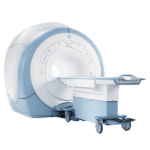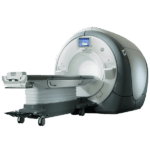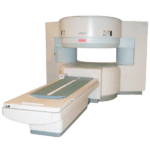Learn about RF Shielding for MRI Scanners
MRI scanners use radio frequencies and magnetic fields to produce images of bones, ligaments, and vascular structures in the human body. Because of the radiofrequencies used in image production, MRI scanners require expensive RF shielding to prevent outside electronic interference.
In today’s article we will discuss how RF shielding is used in MRI technology and the causes of RF interference.
Building a MRI suite requires ample room, thick walls to contain the magnetic field and RF shielding to prevent outside electronic interference. Shielding is a time-consuming costly process and requires a great amount of skill and experience.
What is RF shielding and how it is used in MRI?
Shielding consists of copper clad panels called a Faraday cage installed in the walls of the suite.
The RF shielded windows allow visualization of the patient in the room while preventing electronic interference.
And finally, wave guide vents allow air to pass through the room while blocking outside electrical interference.
What causes RF interference?
Cell phones, radio waves, solar flares and lightning are the main culprits. Shielding prevents any electronic interference around an MR suite. Especially, from the control panel outside the magnet room.
When planning a MR suite, be sure to research companies and vendors who are well versed in the shielding process. Faulty shielding can render poor image production and can lead to incomplete or inaccurate diagnosis of images.
Get Started
Request Pricing Today!
We’re here to help! Simply fill out the form to tell us a bit about your project. We’ll contact you to set up a conversation so we can discuss how we can best meet your needs. Thank you for considering us!
Great support & services
Save time and energy
Peace of mind
Risk reduction
When building out a brand-new MR suite, you must consider three things:
- The type of MR unit: Super conducting magnets require more shielding than their open magnet counter parts. Superconducting magnets generate Radio frequencies for image production. Therefore, they are more susceptible to electronic interference. Open MR units use computer algorithms for primary image production and don’t require as much shielding.
- The strength of the magnetic field: 1.5T, 3.0T etc. The stronger the magnet the more shielding required, especially if you are replacing a 0.5T magnet with a 1.5 or higher Tesla strength. The shielding will have to be upgraded.
- And finally, the size of the room or facility that will house the unit. Larger spaces will require more shielding.
Conclusion
Open and superconducting units require RF shielding to prevent outside electronic interference and produce accurate images. Electronic or magnetic interference originate from man-made or natural sources such as cell phones, computers, and electrical T- storms.
When building out a MRI suite, RF shielding must be considered when budgeting out for it. In some cases, shielding can be over 60% of the total cost of the project, depending on the type and size of the magnet. RF shielding can be included with the construction of the new suite and MRI unit. There are companies that specialize in shielding MR suites and should be considered for the project. It is important that shielding an MR suite is done with precision to ensure image integrity and patient safety.
Sources:
https://www.gehealthcare.com/insights/article/when-and-why-was-mri-invented
https://www.statista.com/statistics/282401/density-of-magnetic-resonance-imaging-units-by-country/
https://www.ncbi.nlm.nih.gov/pmc/articles/PMC1121941/
https://www.euro-emc.co.uk/product/mri-shielded-rooms-faraday-cage



